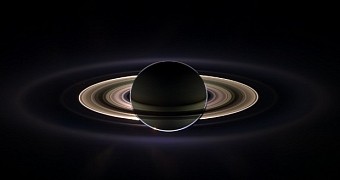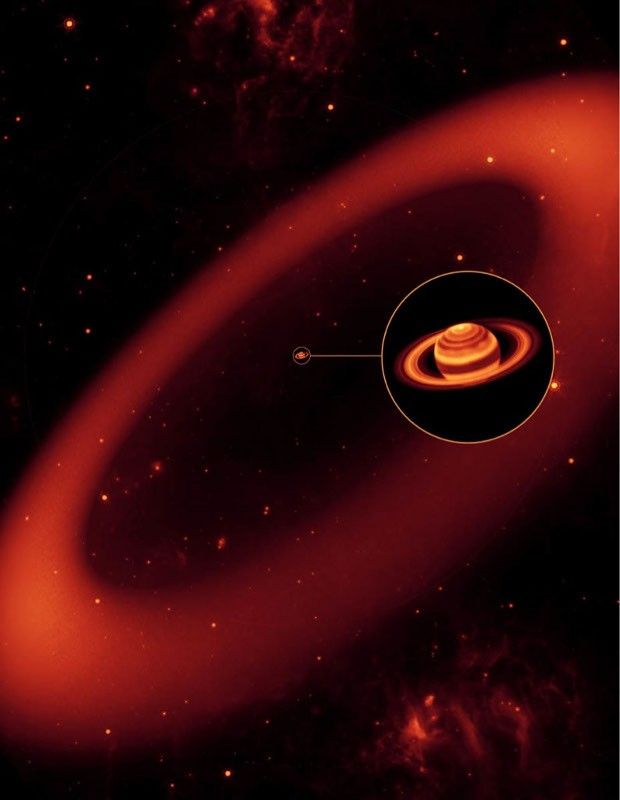A few years back, in 2009, a new ring was identified around Saturn. It didn't take astronomers very long to realize that the newly discovered space halo encircling this cosmic neighbor of ours was positively colossal. It did, however, take them quite a while to figure out just how big the ring is.
In a study published in the journal Nature this past Thursday, June 11, scientists say that, according to their latest data, the ring found around Saturn in 2009 is about 7,000 times bigger than the planet itself.
Let's talk numbers
For starters, perhaps you're wondering how big Saturn is. Well, astronomers say that this orb's radius is one of about 58,000 kilometers (approximately 36,000 miles).
As for the planet's outermost ring, dubbed Phoebe, initial estimates said that it spanned from about 7.7 million to 12.4 million kilometers (4.8 million to 7.7 million miles) from the celestial body.
Latest figures delivered by NASA's WISE (Wide-field Infrared Survey Explorer) spacecraft, however, indicate that it starts some 6 million kilometers (3.75 million miles) from the planet and extends up to a distance of 16.2 million kilometers (10.1 million miles).
If these numbers are correct, this would mean that the Phoebe ring is approximately 10 times the size of Saturn's E ring, previously considered the planet's absolute largest, astronomers explain.
“Putting it into perspective, if Saturn were merely the size of a basketball, this new outer ring would extend nearly two thirds the length of a football field away from it,” scientists say.
How did it form?
Given its impressive size, it makes sense to wonder why it was that it took researchers this long to document this outermost ring of Saturn and get a better idea of its anatomy.
The reason the Phoebe ring remained unknown for years and years is that it's more of a faint halo comprising dust particles knocked off the planet's moon Phoebe by cosmic impacts, Phys Org explains.
The dark particles that make up the Phoebe ring absorb light. Consequently, the structure is not so easily seen in visible light. The best way to spot it is to search for the infrared radiation it produces.
Of the grains that comprise this ring, the majority have a diameter that is about one-tenth or one-fifth the width of a human hair. Cosmic rocks comparable to soccer balls in size or maybe larger account for just 10% of the structure.
The pebbles and dust grains that form the Phoebe ring around Saturn are likely billions of years old. They are scattered in space and astronomers estimate merely a few dozen can be found in a ring chunk of 1 cubic kilometer (0.23 cubic miles).

 14 DAY TRIAL //
14 DAY TRIAL // 

